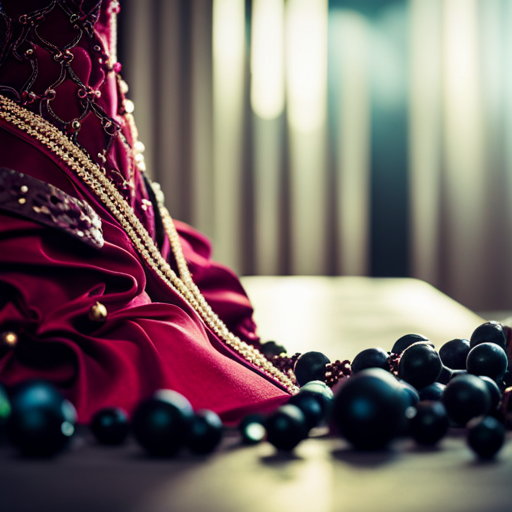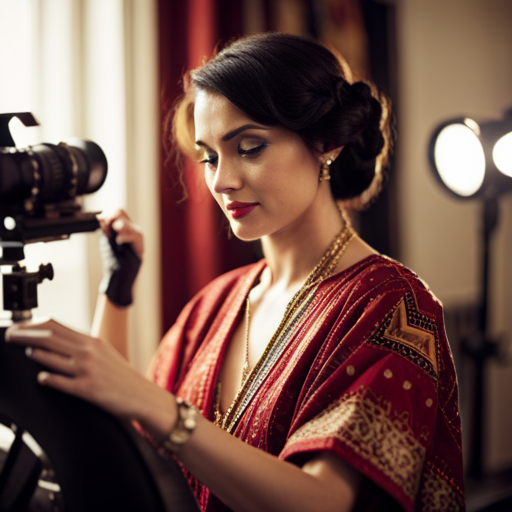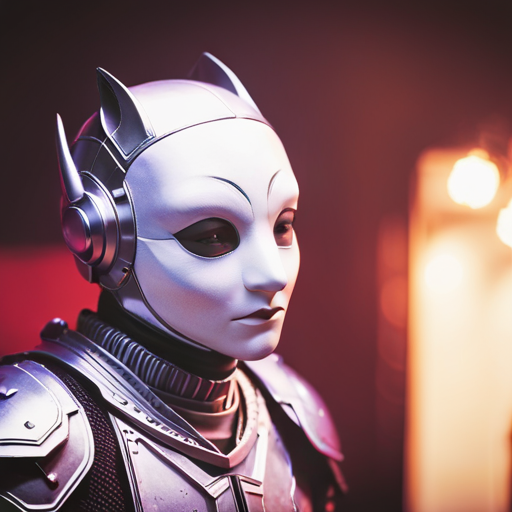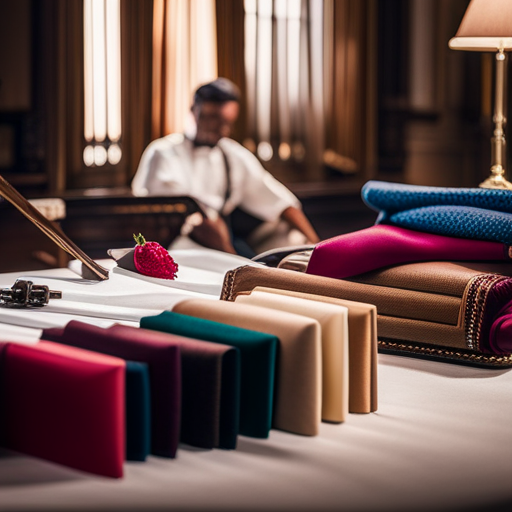Costume Design Inspiration: Drawing From Popular Culture
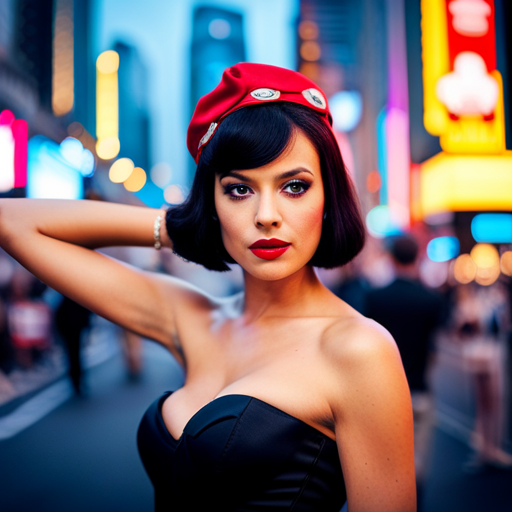
What do iconic superhero costumes, fashion trends, historical references, and celebrity styles have in common? They all serve as sources of inspiration for costume design, drawing from the rich tapestry of popular culture.
This article explores the diverse influences that shape modern costume design, showcasing how elements of popular culture infuse creativity and imagination into the creation of captivating and memorable costumes.
The Influence of Iconic Superhero Costumes
The influence of iconic superhero costumes on contemporary costume design is undeniable. The comic book influence on fashion has been profound, with superhero costume evolution playing a significant role in shaping popular culture and mainstream fashion trends. Superheroes like Superman, Batman, Wonder Woman, and Spider-Man have not only captured the imagination of comic book enthusiasts but have also left an indelible mark on iconic fashion.
The cultural impact of superhero costumes is evident in the way they have permeated various aspects of modern design. From haute couture to streetwear, elements of superhero costumes can be seen in a wide array of clothing and accessory designs. The bold colors, sleek lines, and powerful symbols associated with these iconic costumes have become emblematic of strength, courage, and heroism, influencing designers across the globe.
Furthermore, the enduring appeal of superhero costumes has led to collaborations between fashion houses and comic book publishers, further solidifying their place in the fashion world. The fusion of comic book aesthetics with high-end fashion has resulted in innovative and visually striking creations that continue to resonate with audiences.
The impact of iconic superhero costumes on contemporary costume design is a testament to the enduring power of these beloved characters.
Incorporating Fashion Trends From Pop Culture
Incorporating fashion trends from pop culture can bring a fresh and contemporary feel to costume design. Iconic movie character styles and the fashion influence of music artists are two key points to consider when drawing inspiration from popular culture.
Iconic Movie Character Styles
Drawing inspiration from popular culture, iconic movie character styles often incorporate fashion trends that resonate with audiences. When it comes to iconic movie character fashion and costume design, there are several key points to consider:
-
Timeless Appeal: Iconic movie character styles blend classic elements with contemporary fashion trends, ensuring their relevance across generations.
-
Superhero Influence: Superhero costume design has a significant impact on popular culture, with iconic characters like Spider-Man and Wonder Woman inspiring fashion trends and influencing the costume design industry.
-
Cultural Representation: Iconic movie characters often reflect cultural diversity through their fashion choices, showcasing a variety of styles and traditions.
-
Innovative Design: Costume designers constantly push the boundaries of fashion by integrating cutting-edge technology and materials into iconic movie character styles.
-
Audience Connection: Successful iconic movie character styles not only captivate audiences but also inspire real-world fashion trends, creating a symbiotic relationship between cinema and fashion.
Music Artist Fashion Influence
Music artists have a significant impact on fashion trends, shaping popular culture with their distinctive styles and innovative wardrobe choices. Celebrity fashion often reflects a blend of personal expression and cultural influences, creating iconic looks that resonate with fans and fashion enthusiasts alike. The table below showcases examples of music artists who have left a lasting impression on fashion trends, incorporating elements of pop culture into their distinctive styles.
| Music Artist | Signature Style | Cultural Influence |
|---|---|---|
| David Bowie | Glam rock, androgynous | LGBTQ+ empowerment |
| Madonna | Provocative, trendsetting | Feminism and sexual liberation |
| BTS | Eclectic, high-fashion | Korean pop culture |
| Beyoncé | Bold, empowering | African American heritage |
| Lady Gaga | Avant-garde, theatrical | LGBTQ+ acceptance |
These artists have not only influenced fashion trends but have also contributed to social and cultural movements, making a lasting impact on popular culture. Transitioning from music artist fashion influence, let’s now delve into the significance of drawing from historical and period references in costume design.
Drawing From Historical and Period References
Costume designers often draw inspiration from popular culture to create costumes that reflect the historical and period references of a particular era. Drawing from historical and period references allows costume designers to capture the essence of a specific time period, ensuring authenticity and accuracy in their designs.
When incorporating historical and period references into costume design, designers consider various elements to bring the past to life:
-
Historical reenactments: Costume designers study historical reenactments to gain insight into the clothing, accessories, and overall style of a particular era. This firsthand experience provides valuable knowledge that can be translated into authentic costume designs.
-
Period fashion trends: Understanding the fashion trends and styles that were prevalent during a specific historical period is crucial for creating accurate costumes. Designers research the silhouettes, fabrics, colors, and embellishments that were popular at the time to inform their designs.
Nostalgia and Retro Style in Costume Design
Nostalgia and retro style play a significant role in costume design, influencing everything from color choices to silhouette. Retro influences in design often draw from specific eras, such as the 60s, 70s, or 80s, and can be seen in both casual and formal attire.
Nostalgia’s impact on fashion is undeniable, as designers and costume artists continue to draw inspiration from the past to create contemporary looks that resonate with audiences.
Retro Influences in Design
The resurgence of retro influences in costume design has become increasingly prominent in recent years, reflecting a strong nostalgic appeal and a renewed appreciation for vintage aesthetics in popular culture. This trend is evident in the incorporation of retro fashion and vintage style elements into contemporary costume design, providing a sense of familiarity and evoking feelings of nostalgia among audiences.
The following points emphasize the impact of retro influences in costume design:
-
Nostalgic appeal: Retro-inspired costumes evoke sentimental feelings and connections to the past.
-
Timeless elegance: Vintage aesthetics bring a sense of classic elegance to modern designs.
-
Cultural references: Retro influences often serve as a homage to iconic fashion eras and cultural movements.
-
Versatility: Retro elements can be adapted and reimagined to create unique and innovative costume designs.
-
Consumer demand: The growing popularity of retro-inspired fashion has led to an increased demand for costumes that incorporate vintage elements.
Nostalgia’s Impact on Fashion
Drawing from popular culture, the resurgence of retro influences in costume design has significantly impacted the fashion industry, particularly in evoking a sense of nostalgia and incorporating vintage elements into contemporary designs. Nostalgia fashion has seen a notable revival, with the 90s influence playing a pivotal role in shaping current trends. The fashion industry has embraced iconic 90s styles, such as slip dresses, plaid prints, and baggy jeans, reimagining them in modern silhouettes and fabrics. This fusion of past and present has appealed to a wide audience, tapping into a yearning for the familiarity and comfort associated with the styles of yesteryears. The table below illustrates some key elements of nostalgia fashion and its influence on contemporary costume design.
| Nostalgia Fashion Elements | Description | Contemporary Interpretation |
|---|---|---|
| Slip Dresses | Delicate, minimalistic dresses typically worn in the 90s | Revamped with modern fabrics and cuts, making them versatile for various occasions |
| Plaid Prints | Iconic in 90s grunge fashion | Incorporated into tailored suits and statement coats for a sophisticated yet nostalgic look |
| Baggy Jeans | A hallmark of 90s street style | Updated with unique washes and high-end details, offering a fresh take on casual denim wear |
Using Celebrity and Red Carpet Fashion as Inspiration
Celebrity and red carpet fashion have long served as influential sources of inspiration for costume design, shaping contemporary trends and styles. This influence from media and fashion icons is evident in the way designers draw from celebrity fashion and red carpet inspiration to create innovative and trendsetting designs.
Here are five key ways in which celebrity and red carpet fashion inspire costume design:
-
Embracing Individuality: Celebrities often use their fashion choices to express their individuality, inspiring costume designers to create unique and personalized looks for characters.
-
Setting Trends: Trendsetting celebrities have the power to popularize certain styles, colors, or silhouettes, leading costume designers to incorporate these trends into their designs.
-
Adapting Runway Trends: Costume designers frequently adapt runway trends worn by celebrities to create visually stunning and contemporary costumes for film and television.
-
Iconic Fashion Moments: Fashion icons and their iconic red carpet moments can serve as a rich source of inspiration for costume designers when creating memorable and impactful looks for characters.
-
Reflecting Cultural Shifts: Celebrity and red carpet fashion often reflect cultural shifts and movements, providing costume designers with insights into how to represent these changes through costume design.
Embracing Cultural and Ethnic Influences in Costumes
Embracing cultural and ethnic influences in costumes extends the depth and authenticity of character portrayal, allowing costume designers to capture the nuances of diverse identities and traditions. Cultural fusion in costume design involves integrating elements from different cultures to create a unique and authentic representation. This approach not only adds richness to the visual storytelling but also promotes inclusivity and appreciation for diverse heritages.
By incorporating traditional clothing, patterns, colors, and accessories, costume designers can accurately portray the ethnic backgrounds of characters, fostering a deeper connection between the audience and the story being told.
Ethnic representation in costumes plays a crucial role in breaking stereotypes and promoting cultural understanding. It provides an opportunity to showcase the beauty and complexity of different cultural heritages, challenging misconceptions and celebrating diversity. Moreover, embracing cultural and ethnic influences in costumes can serve as a form of cultural diplomacy, promoting mutual respect and understanding across communities.
Ultimately, by integrating these influences into costume design, creators can contribute to a more inclusive and authentic portrayal of characters, fostering a greater sense of empathy and connection with diverse audiences.
Impact of Popular Music and Subcultures on Costumes
Incorporating elements inspired by popular music and subcultures into costume design allows for a dynamic representation of characters, enriching their visual storytelling and fostering a deeper connection with diverse audiences.
The impact of popular music and subcultures on costumes is undeniable, as it allows costume designers to tap into the ever-evolving landscape of fashion and style, creating characters that resonate with contemporary audiences.
The influence of subcultures such as punk, goth, hip-hop, and rave culture can be seen in the edginess, boldness, and individuality of costumes, reflecting the rebellious and expressive nature of these movements.
Similarly, the fusion of music genres like rock, pop, rap, and electronic music into costume design helps in capturing the essence and energy of different musical eras and communities.
Adapting Popular Literature and Art Into Costume Design
Drawing from popular literature and art provides rich sources of inspiration for costume design. This allows for the creation of elaborate and historically inspired costumes that capture the essence of the characters and the time period in which they are set. Adapting Shakespearean works is a prime example of how literature can influence costume design, resulting in costumes that are both elaborate and historically accurate. Literature-inspired costumes can range from fantastical creations based on magical realms to historically accurate attire from specific time periods.
Similarly, art can also serve as a source of inspiration for costume design. Art Deco, with its bold geometric shapes and lavish ornamentation, has influenced fashion trends and can be seen in costume design through the use of sleek lines, intricate details, and luxurious materials. This art-inspired fashion trend brings the works of renowned artists to life, translating their paintings into wearable art through the use of color, texture, and form.
Frequently Asked Questions
What Are Some Common Challenges Faced by Costume Designers When Drawing Inspiration From Popular Culture?
Costume designers face challenges when drawing inspiration from popular culture, including balancing creativity with cultural sensitivity and ethical considerations. Creative solutions involve careful research and collaboration with diverse perspectives to ensure respectful and accurate representation.
How Do Costume Designers Balance Staying True to the Original Source Material While Also Incorporating Modern Fashion Trends?
When balancing authenticity and modern trends, costume designers draw from cultural influences while navigating ethical considerations. This delicate balance requires a deep understanding of the original source material and a keen eye for incorporating contemporary fashion elements.
What Are Some Examples of Popular Music and Subcultures That Have Had a Significant Impact on Costume Design in Recent Years?
In recent years, popular music and subcultures like K-Pop, Punk Rock, street fashion, and Hip Hop have significantly influenced costume design. These influences have led to bold, eclectic, and innovative designs that resonate with modern audiences.
How Do Costume Designers Navigate the Potential Risks of Cultural Appropriation When Incorporating Cultural and Ethnic Influences Into Their Designs?
When navigating cultural appropriation, costume designers must uphold ethical design considerations and respect cultural influences. This involves maintaining design integrity and seeking permission and collaboration with communities to ensure respectful representation in their designs.
Can You Provide Some Insight Into the Behind-The-Scenes Process of Adapting Popular Literature and Art Into Costume Design for Film or Theatre Productions?
In the adaptation of literature and art into costume design for film or theatre, the behind-the-scenes process involves a delicate balance of incorporating popular trends while navigating cultural influences. This requires meticulous research and a deep understanding of the source material.
Conclusion
In conclusion, costume design draws inspiration from a wide range of popular culture sources. This includes iconic superhero costumes, historical references, and celebrity fashion. The irony lies in the fact that what is considered popular and trendy today may become outdated and retro in the future.
Costume designers must navigate these influences to create visually compelling and relevant designs. They need to resonate with audiences, despite the ever-changing nature of popular culture.

Rufus Whitver is a passionate costume artisan and the creative mind behind layuo.com. With a keen eye for detail and a flair for imaginative design, Rufus brings characters to life through the art of costume making. His expertise encompasses a wide range of styles, from historical recreations to fantastical creations. Through layuo.com, Rufus shares insights, tutorials, and a portfolio showcasing his exceptional craftsmanship, inspiring fellow enthusiasts to embark on their own journey into the world of stunning costumes.

